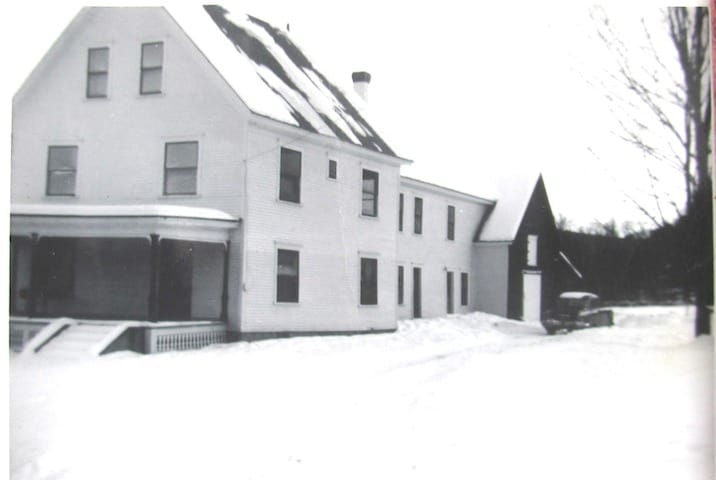
What prompts me to write about gravity feed water was this sentence in my article last week, “Running into the shed she sat down in the tub, which was used to catch the running water…”
I realize some might not know what was meant by “running water.” In the days before electricity, we did have running water in many homes. A spring or well was located at a higher elevation than the house. A waterline was dug from the source to the home. Waterlines were not buried as deep as today, in some cases a foot or less deep, and would freeze if the water wasn’t kept running 24 hours a day, hence “running water.”
I remember seeing running water for the first time in George Farrar’s kitchen sink on Farrar Road in Potash. The water ran year-round. Overflow was discharged through a drainpipe and returned to the earth. I was probably 12 at the time. It fascinated me.

The house I grew up on High Street had a different solution. Our house was a full two stories with a large attic above that we called the third floor. In the attic was a cistern. It’s been years since I’ve seen it, but I remember it maybe three or four feet high and maybe measured something like six feet by four feet. By the time I came along, we had town water.
There was a zinc lining inside the cistern to prevent leaks. A one-inch diameter pipe at the top of the cistern delivered the water. There was a float similar to the float in your toilet tank. When the water level in the cistern dropped to a certain level, water flowed into the cistern. When the float rose to the proper level, the water to the cistern would shut off.
Our water came from a well up on the hill behind us. The water pipe was lead. High water pressure was needed to force the water from the basement to the attic. Water gains pressure as it is forced downhill through a pipe. When our house was built, it was a two-family home, so a lot of water was required.
I remember we had oak toilet tanks mounted on the wall over the toilets. Again, gravity feed. When you pulled the chain, the overhead oak tank was emptied. The water ran down a pipe and flushed the toilet as today.
With the cistern in the attic, anyone who turned on a faucet or flushed a toilet on either the first or second floor, water was sent to that room from the cistern.
A collector of railroad antiques that I knew had a porcelain sign that read, “Don’t pull the chain at the station.”
Problems
There were problems with gravity feed water. If the waterline took on any air, you lost water and the line would have to be primed. An obstruction would create a similar situation. Gravity feed water could be a headache especially in the winter.
I used to own the brick house south of Chester on Route 103 – the house that sits close to the road. It was about 1,200 feet from the well to the house. The lead water pipe I replaced with plastic pipe. Along the road, near Arnold Stoddard’s sugarhouse, it was swampy and very wet. My well was up on the hill behind the sugarhouse.
Here I didn’t need to bury the waterline very deep. I dug down about a foot and laid the plastic pipe. This swampy section didn’t freeze very deep in the winter.
Gravity feed over such a long distance caused numerous problems. Every winter I could plan on losing water for a time.
The map
At the Chester historical Society, we have a hand-drawn map of the homes in the Stone Village. Included are water lines and water rights to those homes. There were a number of wells on the hill behind. These were all gravity fed lines.
I wanted to explain her sitting in the tub of running water so readers would see a larger picture with that story. The more we understand days gone by, the better we are. Today there are still people using gravity feed water.
The photo with this article is the place I grew up in on High Street. Two windows on the third floor are visible.
This week’s old saying my mother said when I complained about the potatoes not being done. “Ma, the potatoes are hard.” “Harder without any,” she’d say.